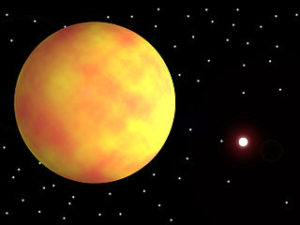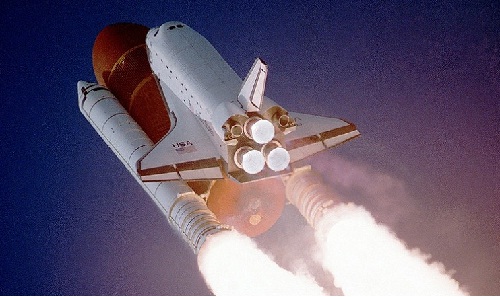
An international team of astronomers from the UK, Australia, and France—in association with London’s Royal Astronomical Society (RAS)—has conducted a computer simulation study to find a missing link in planetary formation process.
Planets form from massive clouds of dust and gas around new stars. There is no confusion among scientists regarding how tiny grains of gas and dust aggregate to form pebble-sized pieces and how planetesimals (objects with a diameter of hundred meters or more) form the planetary cores. However, scientists so far have struggled to explain the intermediate process by which pebbles aggregate to form the kilometer-sized planetesimals. According to them, there are two major obstacles in satisfactory explanation of this intermediate process: (1) the star’s gravity that would pull pebbles and consume them, and (2) the likelihood of pebbles hitting each other at high speeds and breaking apart, rather than combining with each other.
“Until now we have struggled to explain how pebbles can come together to form planets, and yet we’ve now discovered huge numbers of planets in orbit around other stars. That set us thinking about how to solve this mystery,” said Dr. Gonzalez in a statement.
The present study was led by Dr. Jean-Francois Gonzalez of the Lyon Astrophysics Research Center (CRAL) in France. In this study, the team focused on the intermediate stage of planetary formation, and carried out a series of computer simulations of a young solar system to find how dust in a protoplanetary disk would exert drag on the gas component (a process known as aerodynamic drag back-reaction). The team noted that aerodynamic drag back-reaction slows inward-moving dust grains and pushes gas outwards to create high-pressure “dust-traps.” The pebble-sized fragments then aggregate in these “dust-traps” to form planetesimals and planet-sized worlds. According to scientists, the slow movement of large dust grains within “dust-traps” enables them to come together and aggregate.
In the past few years, astronomers have used ground and space-based observatories to detect formation of bright and dark rings in protoplanetary disks around far-away stars, which according to astronomers are actually “dust traps”. Dr. Gonzalez thinks astronomers could now test the new model with these systems to have a better understanding of “dust traps” and planetary formation process.
The detailed finding of the study titled “Self-Induced Dust Traps: Overcoming Planet Formation Barriers” have been published in Monthly Notices of the Royal Astronomical Society.
